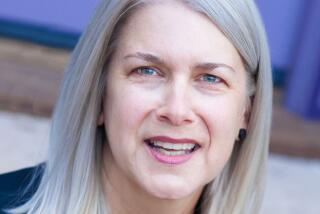Google Doodle honors Rachel Carson, author and environmentalist
Rachel Louise Carson was born 107 years ago today in Springdale, Pa. Google is celebrating the occasion with a Google Doodle of the author and environmentalist standing with her notebook amid a wild world filled with plants and creatures.
Carson is the author of “Silent Spring,” the 1962 book that looked at the poisonous effects of pesticides on our ecosystem. The book’s cry of alarm propelled it onto bestseller lists for three years, and is often credited with sparking the contemporary environmental movement.
It was still a bestseller when its author, who was diagnosed with breast cancer while writing the book, died at home in Maryland in 1964 at age 56.
Sixteen years later, she was awarded the Presidential Medal of Freedom.
Brought up in rural Pennsylvania, Carson trained as a biologist and journalist, getting a master’s degree in zoology from Johns Hopkins University. She wrote for the U.S. Bureau of Fisheries, and worked as an editor and scientist for U.S. Fish and Wildlife Service.
Her first books focused on the ocean: “Under the Sea-Wind” was published in 1941, “The Sea Around Us” in 1951 and, in 1955, “The Edge of the Sea.”
In “Silent Spring,” Carson turned her attention to man’s effect on the land and was a fierce advocate for maintaining the balance of nature. She documented how pesticides, particularly DDT, killed insects and then worked their way into the natural world; a “silent spring” is what she imagined would come of a future without birds -- and worse.
Her reputation as an author and biologist was by then firmly in place: “The Sea Around Us” won the National Book Award and had been a bestseller. So when excerpts of “Silent Spring” appeared in the New Yorker magazine, kicking off intense debate even before the book was on store shelves, Carson was able to hold her ground.
She was called to testify before Congress. John Kenneth Galbraith, then a professor at Harvard University, called her work “humbug.” In a typically dismissive response, Los Angeles Times columnist Dr. F.J. Stare wrote a piece headlined “Agricultural Pesticides Safe, Necessary.” Carson appeared on television alongside the U.S. secretary of Agriculture and the surgeon general to defend her work.
When Carson’s book was published, many of the environmental protections we now take for granted were not in place. The Environmental Protection Agency did not yet exist. Chemicals affected the environment in dramatic ways. For example, Cleveland’s chemical-saturated Cuyahoga River frequently caught fire.
In the last paragraph of “Silent Spring,” Carson wrote, “The ‘control of nature’ is a phrase conceived in arrogance, born of the Neanderthal age of biology and philosophy, when it was supposed that nature exists for the convenience of man. The concepts and practices of applied entomology for the most part date from that stone age of science. It is our alarming misfortune that so primitive a science has armed itself with the most modern and terrible weapons, and that in turning them against the insects it has also turned them against the earth.”
More to Read
Sign up for our Book Club newsletter
Get the latest news, events and more from the Los Angeles Times Book Club, and help us get L.A. reading and talking.
You may occasionally receive promotional content from the Los Angeles Times.







